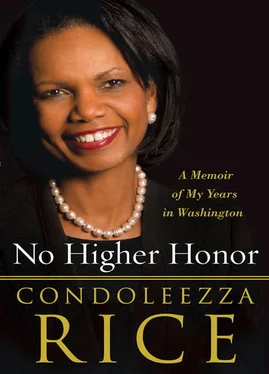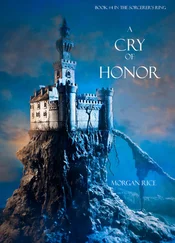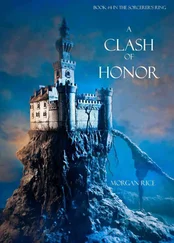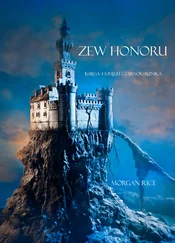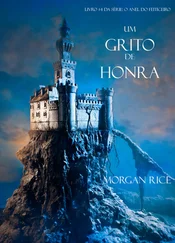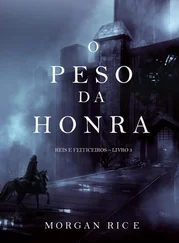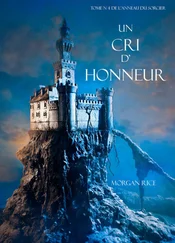I remembered my first time at Camp David. The President and I had decided to go to the gym to work out. We had gotten horribly lost, disoriented by the blinding snowstorm all around us. “They may never find us,” I said.
The President laughed. “Great first headline—the President and the national security advisor lost in the snow,” he joked.
On Sunday morning the presidential party attended church, as we’d done so many times before, in good times and bad. The Camp David staff gathered in the hanger to say good-bye, and then we flew off in Marine One. There is a nice tradition at Camp David: each time the President arrives, the flag of the commander in chief is raised just as he lands. It is lowered the minute he leaves, only to be raised again upon his return. This time when the marines lowered the flag, it was for the last time. I looked over at the forty-third President, who was quietly gazing out of the window. I wanted to say something, but it was better not to. I closed my eyes and let scenes from the last eight years flash in front of me. And then I thanked God for the improbable events that had brought me to this place. There had been no higher honor.

EPILOGUE
AS THE WHITE HOUSE Soviet specialist at the end of the Cold War, I witnessed the liberation of Eastern Europe, the unification of Germany on Western terms, and the beginning of the peaceful collapse of the Soviet Union. It is difficult in retrospect to remember just how unlikely those events once seemed as the Soviet Union cast its shadow across Eastern Europe. Few people personally remember the Hungarian Revolution of 1956 and fewer still the Berlin crisis of 1948. When I returned to Stanford in 2009, I was startled when I realized that some of my students had not even been born when the Berlin Wall fell, and many had never seen the hammer and sickle fly above the Kremlin.
As the Cold War’s darkest days fade from memory, what once seemed impossible now seems to have been inevitable. In reality, the peaceful resolution of the Cold War was the product of farsighted decisions made at a time of great uncertainty. After World War II, the United States and its allies set out a vision and built institutions to guide us through the “long-twilight struggle” to victory. The foundation of that strategy was an unyielding trust in the ability of free nations to outperform and then to outlast those that denied their people freedom.
In my last major television interview on Meet the Press , David Gregory thanked me for all the time I’d given to the program. He told me that it was my twentieth appearance on the show. Twenty times. My God, that’s a lot of Sunday mornings . David asked a version of a question that I’ve been asked repeatedly since: What will be the legacy of the Bush administration? Often accompanying such queries is the implication—well, more than an implication—that the turmoil of 9/11, Afghanistan, Iraq, and the Middle East would forever scar the eight years that we served. I’ve answered honestly that my own experiences affirm that “history has a long arc,” and I do believe that “it bends toward justice.”
The past decade has tested that proposition and those who have been responsible for leadership of the country through these turbulent times. There have been three great shocks to the international system since 2001. The first two, 9/11 and the global financial crisis, bookend the presidency of George W. Bush and strike at the heart of our nation’s most vital interests—our security and our prosperity. The third is the Arab Spring.
Since the beginning of this historic year, the people of the Arab world have challenged the autocratic order in at least a half dozen states. Some governments have fallen; others teeter; a few have regained their balance. Still others have not yet faced the unrest but brace for the day that will undoubtedly come. The desire for freedom will persist until it is secured.
As Americans, this should not surprise us. The United States has a view of how human history ought to unfold. In 1776 we claimed our inalienable rights and insisted on their universality. As the United States grew into a great power and then a superpower, it has not been neutral in the struggle between freedom and tyranny.
The events of the Arab Spring have vindicated the belief in the universality of our values. Those commentators who today reduce the demands of the people in the streets of Tunis and Cairo to only economic grievances do them a disservice. Certainly people want a better life, but they can only demand it and hold their government accountable if they have a right to change their leaders. If they can’t do that peacefully, they will turn to violence to achieve their goals.
The events of September 11 brought the practical implications of that dynamic into sharper focus. The terrorists responsible for those devastating attacks hailed from countries where oppressive governments had closed peaceful outlets for political reform, creating conditions ripe for violent extremism. These terrorists were able to operate in weak or failing states that allowed them to recruit, train, and plan their attacks with relative impunity. President Bush and his foreign policy team understood those implications and adjusted course after 9/11. We pursued the Freedom Agenda not only because it was right but also because it was necessary. There is both a moral case and a practical one for the proposition that no man, woman, or child should live in tyranny. Those who excoriated the approach as idealistic or unrealistic missed the point. In the long run, it is authoritarianism that is unstable and unrealistic. This is because every dictator fears the “Ceausescu moment,” described to us by the Romanians when President Bush visited Bucharest in 2002.
In 1989 Nicolae Ceausescu, then secretary general of the Romanian Communist Party and overseer of a repressive regime, went into a square in Bucharest thinking he had sufficiently quelled the growing discontent in his country. His speech began with a recitation of all he’d done for the Romanian people. At the time revolutions were spreading throughout Eastern Europe—in Poland, Czechoslovakia, Hungary, East Germany, and beyond.
As he was speaking, an old lady suddenly yelled, “Liar!” Then ten people joined her, then one hundred, then one thousand, and soon one hundred thousand. An unnerved Ceausescu turned to run but the military delivered him to the revolutionaries instead. The hated Romanian leader and his wife, Elena, were executed.
That is the Ceausescu moment, when the only thing standing between the dictator and his people—fear—breaks down, and there is nothing left but anger. An old lady yells “liar,” a policeman refuses to fire at the Berlin Wall, a soldier turns his tank turret away from the crowd in the square, and suddenly the tides have turned in favor of the oppressed. We had hoped that the authoritarians of the Middle East, particularly our friends, would change the basis of their relationship to their people before the Ceausescu moment came to them. But some of them did not. As I write, people across the region are clamoring for their liberty and demanding a voice in how they will be governed.
While freedom and democracy sustain each other, they are not the same thing. Democracy is both a process and a system of governance that protects freedom. The process is begun with elections—a first step toward stable democracy. The harder task is to construct institutional arrangements that define the relationship of the individual’s rights to the state’s authority and sustain that contract over time.
The United States, more than any other country, should understand that the journey from freedom to stable democracy is a long one and that its work is never done. After all, when the Founding Fathers said, “We the people,” they didn’t mean me. My ancestors were counted as three-fifths of a man in the deal that permitted the founding of this country. My father had trouble registering to vote in Alabama in 1952 due to poll tests and harassment of black voters. And I didn’t have a white classmate until I moved from Birmingham to Denver at age twelve.
Читать дальше
